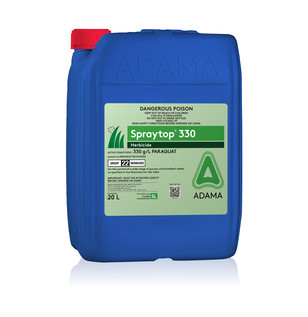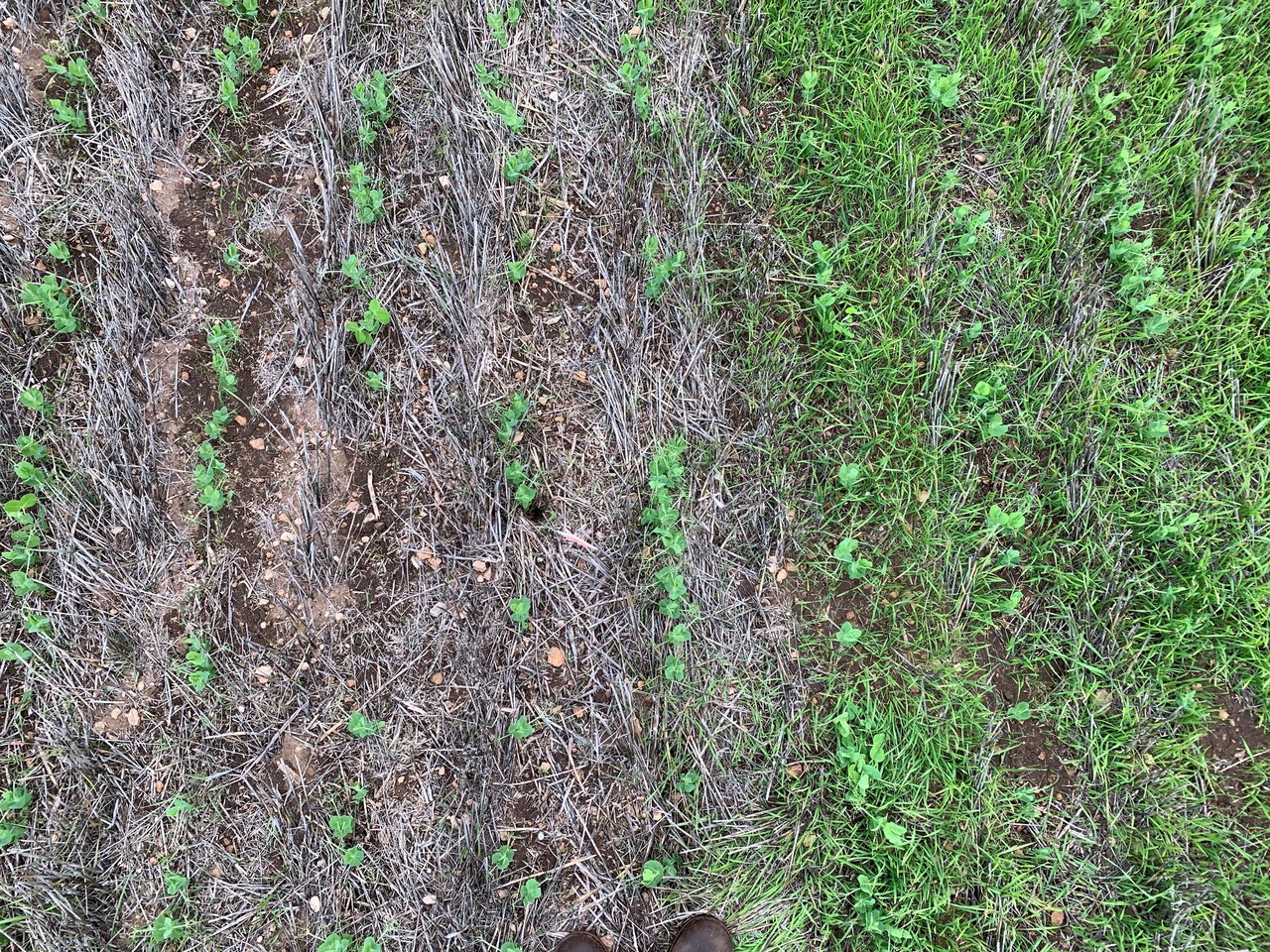
Pulse crop grass weed control boost for cropping systems

Ashlyn Ridgway, Agronomist with Nutrien at Pingelly in Western Australia (pictured above), shows the excellent root pruning of later germinating ryegrass provided by the pre-emergent application of Ultro herbicide in lupins.
The pre-emergent herbicide, Ultro®, is being targeted for use in premium pulse crops in high weed pressure paddocks in south-eastern Australia and in lupin crops in Western Australia and is achieving higher levels of grass control, however it also offers wider benefits for entire cropping systems.
Increased early weed control also reduces root disease build-up for following seasons and allows improved crop competition against weeds, while excellent root pruning provided by the herbicide on the later remaining grasses assists the effectiveness of post-emergent selective herbicides.
Ultro-treated grass weeds can also remain greener for longer and in particularly high weed pressure paddocks requiring crop-topping, this allows these applications to be delayed, reducing the risk of crop damage from the operation and concern over grain maximum residue limits.
Featuring a new herbicide mode of action (Group 23), Ultro can be used in faba beans, lentils, field peas, chickpeas, vetch, broad beans as well as lupins across Australia, and also in winter fallow.
Alistair Crawford, Market Development Manager with ADAMA Australia in Victoria and Tasmania, said Ultro was used last season especially in high value lentil crops, which also generally provide reduced competition against weeds, as well as in some faba bean and field pea crops.
“It was used in problem weed paddocks mainly against ryegrass, and where there is some increasing resistance to glyphosate and clethodim, but it was also very effective against brome grass, which is more prominent in northern areas,” Alistair said.
“Ultro affects the whole plant and prunes roots, so it reduces weed numbers and can improve post-emergent grass weed control. This can reduce seedset for next year, which can help delay the development of herbicide resistance.”
Bevan Addison, Market Development Manager with ADAMA Australia in WA, said many growers used Ultro in lupins as an alternative to propyzamide for control of ryegrass, but also for brome and barley grasses, which have become more problematic in recent times.
“The interest in Ultro for barley grass is growing because grass selective sprays are not performing as well against various populations and it can reduce the pressure on these herbicides,’’ Bevan said.
He said where Roundup Ready canola and the associated use of glyphosate featured in programs, Ultro had proven particularly effective when included with paraquat in pre-plant knockdown applications.
“Once out of the canola phase, the use of paraquat with Ultro and metribuzin has been highly successful. Ultro is highly compatible with paraquat and it improves grass control from the knockdown.”
Ashlyn Ridgway, Agronomist with Nutrien at Pingelly in WA (pictured above), said various growers in the area followed this application and also added simazine for their lupins last year and achieved a great weed control result.
Good herbicide activity was observed on late germinating ryegrass roots up to three months after the knockdown treatment with Ultro.
“The residual activity was great. It certainly took the pressure off the ‘post-em’ grass spray and growers will be using more in future years,” Ashlyn said.
At Wycheproof in Victoria, Elders Agronomist Roy Daykin said Ultro applications with simazine and Spraytop® performed well in numerous instances.
“Feedback from growers was very positive, with good control of ryegrass, including ryegrass with suspected resistance to glyphosate. This took a great deal of pressure off Group 1 post-emergent chemistry,” Roy said.
“The solubility of carbetamide (the active ingredient in Ultro) compared with propyzamide seems to fit our dryland program better.”
At Kadina in South Australia, AW Vater & Co Agronomist Zack Zweck said various growers used Ultro in combination with Reflex® pre-emergent herbicide and achieved good success.
“It controlled early ryegrass and brome grass, allowing for delayed in-crop grass sprays. It also helped the in-crop grass sprays work better, as there were less grass weeds present,” Zack said.
Alistair said to aid herbicide resistance management, ADAMA Australia recommended limiting the use of Ultro to once every four years.
He said in tight cropping rotations, careful consideration would need to be given to herbicide choice, however in more common rotations featuring pulses, canola and cereals, an application every four years would be easy to achieve and would allow rotation of all herbicide options in the different phases.
For further information on the use of Ultro herbicide in pulse crops, growers can contact their local ADAMA Australia representative or visit ADAMA.com.
Products in this article

Spraytop® 330

